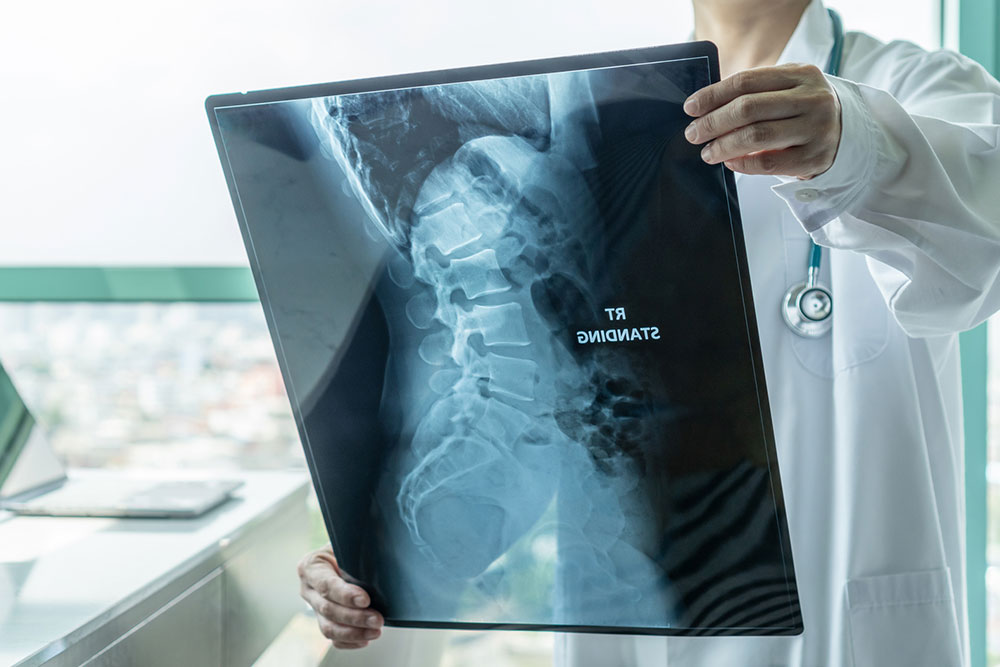Comprehensive Guide to Recognizing the 8 Major Signs of Cervical Degeneration
This comprehensive guide explores the top 8 warning signs of cervical degeneration, providing detailed descriptions and practical prevention tips. Early detection is crucial to prevent worsening symptoms and maintain neck health. Learn about headache patterns, neck stiffness, nerve symptoms, and more to identify issues early and seek proper treatment. The article emphasizes the importance of posture, exercises, and medical consultation for effective management of cervical spine health, especially for aging adults and those engaged in repetitive neck activities.

Comprehensive Guide to Recognizing the 8 Major Signs of Cervical Degeneration
Cervical degeneration, a common condition affecting the cervical spine's discs, joints, and surrounding tissues, impacts a significant portion of the aging population. Studies indicate that over 85% of adults over the age of 60 experience some degree of cervical spinal deterioration. This degenerative process can be accelerated by repetitive neck movements, prolonged poor posture, and habits such as extensive computer or smartphone use, as well as long hours of driving or manual labor involved in certain occupations.
Understanding the early warning signs of cervical degeneration is crucial for timely intervention. Recognizing symptoms early can prevent further deterioration, reduce pain, and improve quality of life. This detailed guide highlights the eight most critical indicators indicating possible cervical degeneration, helping individuals identify potential issues and seek appropriate medical care promptly.
1. Persistent Head Discomfort and Headaches
One of the earliest and most noticeable symptoms of cervical degeneration is frequent headaches that originate from the base of the skull, radiating upward toward the forehead and behind the eyes. These headaches, often referred to as cervicogenic headaches, can be dull and persistent at first but tend to become more intense over time. Some sufferers report pulsating or throbbing sensations that disrupt daily activities. Movements such as turning the head, looking up, or even simple neck movements can exacerbate the pain, making it a constant nuisance. The discomfort can extend to surrounding areas such as the temples and around the eyes, leading to fatigue and irritability.
2. Chronic Neck Pain and Stiffness
Initial signs of cervical degeneration often include localized neck pain and stiffness, which tend to worsen after periods of inactivity or upon awakening in the morning. This stiffness can make turning the neck difficult and uncomfortable. The pain may range from a dull, nagging ache to sharp, stabbing sensations, sometimes radiating into the shoulders and upper back. Over-the-counter pain relievers and gentle stretching exercises may alleviate symptoms temporarily. However, persistent or worsening neck discomfort warrants professional medical assessment to prevent further degeneration and complications.
3. Restricted Range of Motion
Degeneration of cervical discs and the formation of osteophytes, often called bone spurs, can lead to reduced mobility of the neck. Patients may notice difficulty turning their head side-to-side or tilting it forward and backward. Muscle tightness, inflammation, and joint stiffness are common contributing factors. This restricted movement can impair daily activities such as driving, looking behind while walking, or even simple tasks like checking blind spots. Maintaining flexibility through physical therapy or specific exercises, under medical supervision, can help mitigate this issue.
4. Muscle Spasms and Strength Deficits
Muscle spasms are often an early response to nerve irritation or joint instability in cervical degeneration. These involuntary contractions cause pain and further restrict movement. Patients might also experience muscle weakness in the neck and shoulders, leading to difficulty performing routine activities such as lifting objects or maintaining posture. Over time, muscle fatigue and weakness can contribute to poor stability of the cervical spine, increasing the risk of falls or further injury. Using supportive devices like neck braces, alongside physical therapy, can provide relief and support recovery. Consulting a healthcare provider for proper diagnosis and management is recommended.
5. Joint Noises: Grinding and Popping Sounds
Many individuals notice cracking, grinding, or popping sounds when moving their neck. These sounds are generally caused by roughened joint surfaces or the release of gas from joint spaces, indicating cartilage wear or joint degeneration. While these noises are typically harmless, they can be alarming and suggest ongoing joint deterioration. Increased frequency or accompanying pain should prompt medical evaluation to assess joint health and consider appropriate treatment options.
6. Neurological Symptoms: Numbness and Tingling
One of the more serious signs of cervical degeneration is nerve compression, which can cause numbness, tingling, or a pins-and-needles sensation in the arms, hands, and fingers. In severe cases, this compression can compromise grip strength, dexterity, and overall arm coordination, impacting everyday tasks like writing, gripping objects, or buttoning clothes. Persistent neurological symptoms require urgent medical attention, as prolonged nerve compression may lead to permanent nerve damage or loss of function. Diagnosis often involves imaging studies such as MRI or CT scans to identify nerve impingement and plan appropriate intervention.
7. Morning Stiffness
Experiencing stiffness after waking is common among those with cervical degeneration, attributable to overnight lack of movement and reduced circulation. The stiff neck gradually loosens up with gentle stretching and warm showers, but the duration and intensity of morning stiffness can serve as an indicator of the severity of degeneration. Maintaining good posture during sleep, avoiding prolonged neck positions, and practicing regular cervical stretches can help reduce morning stiffness and improve daily functioning.
8. Severe Symptoms: Difficulty Swallowing and Dysphagia
Although less common, advanced cervical degeneration can impinge on the esophagus or other swallowing structures, leading to difficulty swallowing, known medically as dysphagia. Patients may feel that food gets stuck in their throat, experience coughing during meals, or notice a choking sensation. These symptoms are often associated with worsening neck pain and headaches. Persistent swallowing difficulties should prompt immediate medical evaluation, as addressing the underlying cause can prevent complications and improve quality of life.
In summary, recognizing these key signs early can facilitate timely medical intervention, potentially slowing the progression of cervical degeneration and alleviating discomfort. Maintaining good posture, engaging in appropriate physical activity, and seeking regular medical checkups can significantly contribute to neck health and overall well-being.





